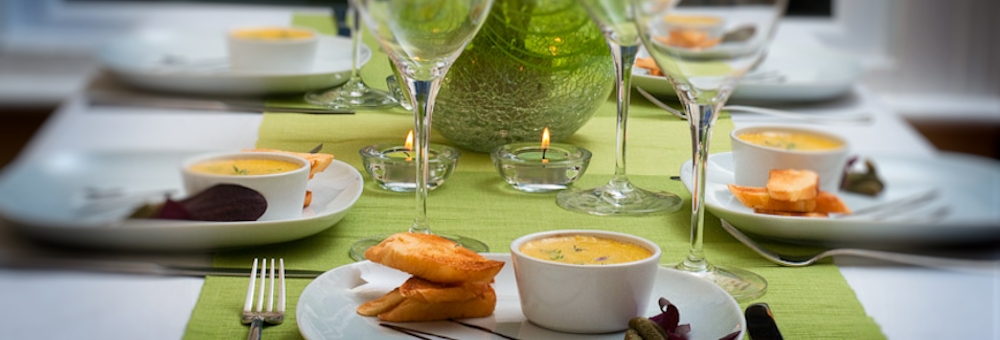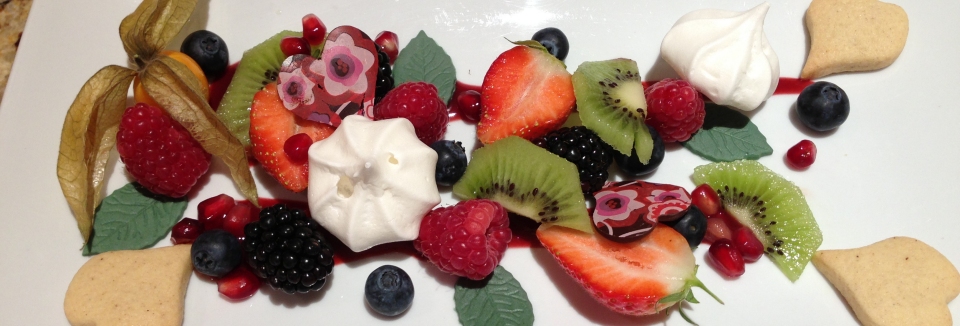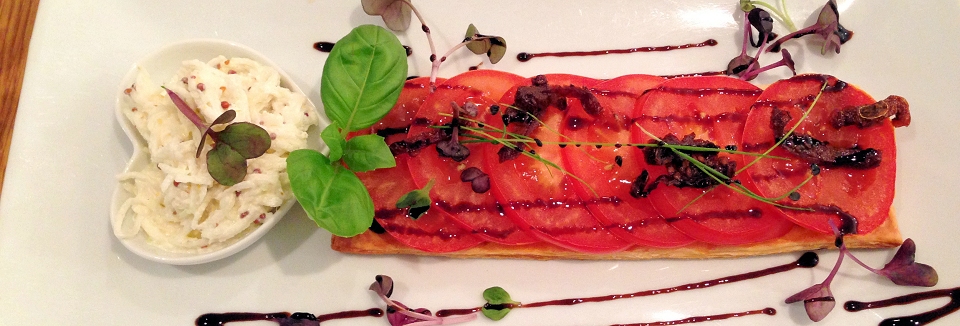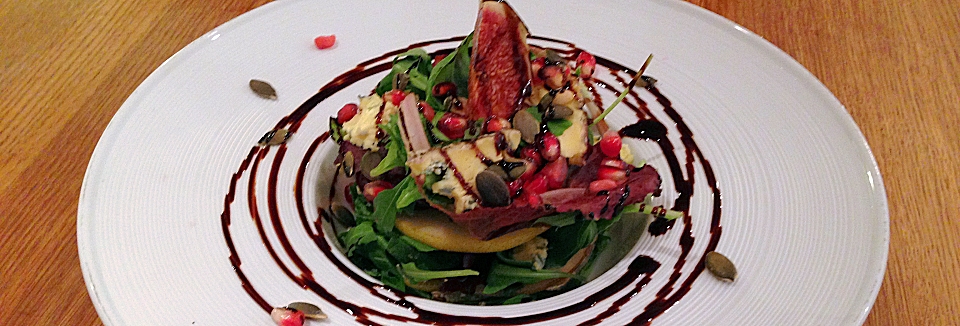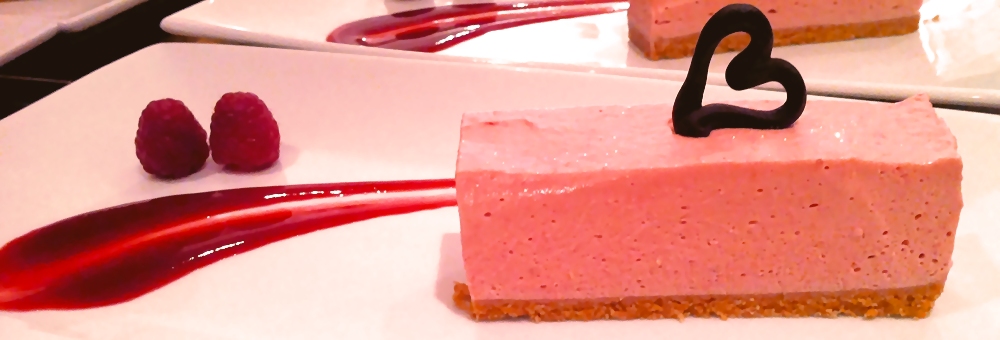This is where chromatin (nuclear proteins and DNA) is found. This page contains cell structure and function worksheet answers that will explain the different types of cells in plants and animals, and how the cells function to make the living organism. Source: db-excel.com . It is commonly used in various manufactures, including finance, accounting, and education. 0000084115 00000 n
Carbon Compounds and 4.) a. Glucose + glucose There are five primary functions of carbohydrates in the human body. The plasmodesmata is a channel for transmitting molecules between adjacent cells, which are then able to interact with the cytoplasm and nucleus. By convention, the carbon atoms in a monosaccharide are numbered from the terminal carbon closest to the carbonyl group. Chitin is also a major component of fungal cell walls; fungi are neither animals nor plants and form a kingdom of their own in the domain Eukarya. In this activity, students will answer 16 questions regarding the 4 macromolecules: , lipids, proteins, and nucleic acids. The animal cell membrane is a phospholipid bilayer while the plant cell membrane is also a phospholipid bilayer but with some special features added to it. b. Ribose The starch that is consumed by humans is broken down by enzymes, such as salivary amylases, into smaller molecules, such as maltose and glucose. People who are not hardcore training and choose to run a 5-kilometer race for fun do not need to consume a big plate of pasta prior to a race since without long-term intense training the adaptation of increased muscle glycogen will not happen. Click here to read about that whole year bundle if you want to buy a whole years worth of homework pages at a discount as compared to buying them separately. In this minilesson you get it all! ATP stores chemical energy that cells use to do work. Cell Structure And Function Test A Answer Key is universally compatible with any devices to read. The plasma membrane of a plant cell communicates with other cells in the plant using plasmodesmata. Glucose and galactose are aldoses. Fructose is a ketose. 3. , lipids, proteins, and nucleic acids). Why is it necessary for the body to spare protein. provide nutrients and oxygen to the organism via diffusion or facilitated transport. 0000001930 00000 n
C6H12O2 or C5H10O5 4. The building blocks of all carbohydrates are simple sugars called monosaccharides. In addition, have students identify the type, biomolecule in each box. Vacuole: Primarily, it stores water from the plant and controls its loss through evaporation. Some of the questions will present you with a definition of an important term. The only difference is in some organelles, which are present in plant cell parts and absent in animal cells. Cross), Principles of Environmental Science (William P. Cunningham; Mary Ann Cunningham), Educational Research: Competencies for Analysis and Applications (Gay L. R.; Mills Geoffrey E.; Airasian Peter W.), Forecasting, Time Series, and Regression (Richard T. O'Connell; Anne B. Koehler), Answers to carbohydrates worksheet for Sharon Solsky, Fundamentals Of Biological Chemistry (CHM 112), Probability & Making Decisions about Chance Events, Tenets of historical & mercantilist school, Motivation & Emotion - Exam 2 Study Guide, Managing Engaging Learning Environments (D095), Seidel's Guide to Physical examination (043), Health Assessment Of Individuals Across The Lifespan (NUR 3065L), PHIL ethics and social responsibility (PHIL 1404), Early Childhood Foundations and the Teaching Profession (ECE-120), Creating and Managing Engaging Learning Environments (ELM-250), General Chemistry (Continued) (CHEM 1415), Professional Application in Service Learning I (LDR-461), Advanced Anatomy & Physiology for Health Professions (NUR 4904), Principles Of Environmental Science (ENV 100), Operating Systems 2 (proctored course) (CS 3307), Comparative Programming Languages (CS 4402), Business Core Capstone: An Integrated Application (D083), MMC2604 Chapter 1 Notesm - Media and Culture: Mass Communication in a Digital Age, ECO 201 - Chapter 5 Elasticity and Its Applications, MCQs Leadership & Management in Nursing-1, 1-2 Short Answer- Cultural Objects and Their Culture, Kami Export - Jacob Wilson - Copy of Independent and Dependent Variables Scenarios - Google Docs, Kaugnayan ng panitikan sa larangan ng Pilipinas, The Deep Dive Answers - jdjbcBS JSb vjbszbv, Entrepreneurship Multiple Choice Questions, Leadership class , week 3 executive summary, I am doing my essay on the Ted Talk titaled How One Photo Captured a Humanitie Crisis https, School-Plan - School Plan of San Juan Integrated School, SEC-502-RS-Dispositions Self-Assessment Survey T3 (1), Techniques DE Separation ET Analyse EN Biochimi 1, Describe a biological function for each of the following carbohydrates This page is part of my giant Biology Homework for a Year Bundle. Describe hydrolysis for carbohydrates. Some glucose is also used as building blocks of important macromolecules, such as RNA, DNA, and ATP. The LibreTexts libraries arePowered by NICE CXone Expertand are supported by the Department of Education Open Textbook Pilot Project, the UC Davis Office of the Provost, the UC Davis Library, the California State University Affordable Learning Solutions Program, and Merlot. Figure4. The nucleus contains DNA molecules that store all genetic information and RNA molecules that transcribe mRNA sequences into proteins. You will receive your score and. The liver uses its glycogen reserve as a way to keep blood-glucose levels within a narrow range between meal times. The structure gives mechanical support to the cell and its contents while maintaining shape stability. In other words, the ratio of carbon to hydrogen to oxygen is 1:2:1 in carbohydrate molecules. Biochemistry Unit: - The Carbon Atom, Monomer vs Polymer, , Lipids, Proteins, and Nucleic Acids - With a focus, these Organic Molecules.INCLUDES:Macromolecules Animated PowerPoint Presentation5 page - Macromolecules Student Guided NotesMacromolecules Chart Review Practice (2 versions) These notes are streamlined to hit major concepts without being overly detailed. The presence of adequate glucose basically spares the breakdown of proteins from being used to make glucose needed by the body. 0
The lysosome can also destroy harmful bacteria, as well as other foreign objects. C 3 H 8 0 3 b. Fructose and ribose also form rings, although they form five-membered rings as opposed to the six-membered ring of glucose. Macromolecule WebQuest and Review Game (High School), In this interactive online WebQuest students will learn about the different types, macromolecules. 0000065484 00000 n
APUS: An Introduction to Nutrition 1st Edition, { "3.01:_Introduction_to_Carbohydrates" : "property get [Map MindTouch.Deki.Logic.ExtensionProcessorQueryProvider+<>c__DisplayClass228_0.b__1]()", "3.02:_A_Closer_Look_at_Carbohydrates" : "property get [Map MindTouch.Deki.Logic.ExtensionProcessorQueryProvider+<>c__DisplayClass228_0.b__1]()", "3.03:_Digestion_and_Absorption_of_Carbohydrates" : "property get [Map MindTouch.Deki.Logic.ExtensionProcessorQueryProvider+<>c__DisplayClass228_0.b__1]()", "3.04:_The_Functions_of_Carbohydrates_in_the_Body" : "property get [Map MindTouch.Deki.Logic.ExtensionProcessorQueryProvider+<>c__DisplayClass228_0.b__1]()", "3.05:_Looking_Closely_at_Diabetes" : "property get [Map MindTouch.Deki.Logic.ExtensionProcessorQueryProvider+<>c__DisplayClass228_0.b__1]()", "3.06:_Health_Consequences_and_Benefits_of_High-Carbohydrate_Diets" : "property get [Map MindTouch.Deki.Logic.ExtensionProcessorQueryProvider+<>c__DisplayClass228_0.b__1]()", "3.07:_Carbohydrates_and_Personal_Diet_Choices" : "property get [Map MindTouch.Deki.Logic.ExtensionProcessorQueryProvider+<>c__DisplayClass228_0.b__1]()", "3.08:_The_Food_Industry-_Functional_Attributes_of_Carbohydrates_and_the_Use_of_Sugar_Substitutes" : "property get [Map MindTouch.Deki.Logic.ExtensionProcessorQueryProvider+<>c__DisplayClass228_0.b__1]()", "3.E:_Exercises" : "property get [Map MindTouch.Deki.Logic.ExtensionProcessorQueryProvider+<>c__DisplayClass228_0.b__1]()" }, { "00:_Front_Matter" : "property get [Map MindTouch.Deki.Logic.ExtensionProcessorQueryProvider+<>c__DisplayClass228_0.b__1]()", "01:_Nutrition_and_You-_An_Introduction_and_How_to_Achieve_a_Healthy_Diet" : "property get [Map MindTouch.Deki.Logic.ExtensionProcessorQueryProvider+<>c__DisplayClass228_0.b__1]()", "02:_Gastrointestinal_Tract" : "property get [Map MindTouch.Deki.Logic.ExtensionProcessorQueryProvider+<>c__DisplayClass228_0.b__1]()", "03:_Carbohydrates" : "property get [Map MindTouch.Deki.Logic.ExtensionProcessorQueryProvider+<>c__DisplayClass228_0.b__1]()", "04:_Lipids" : "property get [Map MindTouch.Deki.Logic.ExtensionProcessorQueryProvider+<>c__DisplayClass228_0.b__1]()", "05:_Proteins" : "property get [Map MindTouch.Deki.Logic.ExtensionProcessorQueryProvider+<>c__DisplayClass228_0.b__1]()", "06:_Energy_Metabolism" : "property get [Map MindTouch.Deki.Logic.ExtensionProcessorQueryProvider+<>c__DisplayClass228_0.b__1]()", "07:_Nutrition_and_Cancer" : "property get [Map MindTouch.Deki.Logic.ExtensionProcessorQueryProvider+<>c__DisplayClass228_0.b__1]()", "08:_Antioxidant_Nutrients" : "property get [Map MindTouch.Deki.Logic.ExtensionProcessorQueryProvider+<>c__DisplayClass228_0.b__1]()", "09:_Nutrients_and_Bone_Metabolism" : "property get [Map MindTouch.Deki.Logic.ExtensionProcessorQueryProvider+<>c__DisplayClass228_0.b__1]()", "10:_Water_Electrolytes_Acid-Base_Balance" : "property get [Map MindTouch.Deki.Logic.ExtensionProcessorQueryProvider+<>c__DisplayClass228_0.b__1]()", "11:_Nutrients_Involved_in_Hematopoietic_System" : "property get [Map MindTouch.Deki.Logic.ExtensionProcessorQueryProvider+<>c__DisplayClass228_0.b__1]()", "12:_Maternal_Infant_Childhood_and_Adolescent_Nutrition" : "property get [Map MindTouch.Deki.Logic.ExtensionProcessorQueryProvider+<>c__DisplayClass228_0.b__1]()", "13:_Nutrition_From_Adulthood_to_the_Elderly_Years" : "property get [Map MindTouch.Deki.Logic.ExtensionProcessorQueryProvider+<>c__DisplayClass228_0.b__1]()", "14:_Alcohol" : "property get [Map MindTouch.Deki.Logic.ExtensionProcessorQueryProvider+<>c__DisplayClass228_0.b__1]()", "15:_Nutrition_and_Exercise" : "property get [Map MindTouch.Deki.Logic.ExtensionProcessorQueryProvider+<>c__DisplayClass228_0.b__1]()", "16:_Additional_Reading" : "property get [Map MindTouch.Deki.Logic.ExtensionProcessorQueryProvider+<>c__DisplayClass228_0.b__1]()", "zz:_Back_Matter" : "property get [Map MindTouch.Deki.Logic.ExtensionProcessorQueryProvider+<>c__DisplayClass228_0.b__1]()" }, 3.4: The Functions of Carbohydrates in the Body, [ "article:topic", "showtoc:no", "license:ccbyncsa", "licenseversion:40" ], https://med.libretexts.org/@app/auth/3/login?returnto=https%3A%2F%2Fmed.libretexts.org%2FCourses%2FAmerican_Public_University%2FAPUS%253A_An_Introduction_to_Nutrition_(Byerley)%2FAPUS%253A_An_Introduction_to_Nutrition_1st_Edition%2F03%253A_Carbohydrates%2F3.04%253A_The_Functions_of_Carbohydrates_in_the_Body, \( \newcommand{\vecs}[1]{\overset { \scriptstyle \rightharpoonup} {\mathbf{#1}}}\) \( \newcommand{\vecd}[1]{\overset{-\!-\!\rightharpoonup}{\vphantom{a}\smash{#1}}} \)\(\newcommand{\id}{\mathrm{id}}\) \( \newcommand{\Span}{\mathrm{span}}\) \( \newcommand{\kernel}{\mathrm{null}\,}\) \( \newcommand{\range}{\mathrm{range}\,}\) \( \newcommand{\RealPart}{\mathrm{Re}}\) \( \newcommand{\ImaginaryPart}{\mathrm{Im}}\) \( \newcommand{\Argument}{\mathrm{Arg}}\) \( \newcommand{\norm}[1]{\| #1 \|}\) \( \newcommand{\inner}[2]{\langle #1, #2 \rangle}\) \( \newcommand{\Span}{\mathrm{span}}\) \(\newcommand{\id}{\mathrm{id}}\) \( \newcommand{\Span}{\mathrm{span}}\) \( \newcommand{\kernel}{\mathrm{null}\,}\) \( \newcommand{\range}{\mathrm{range}\,}\) \( \newcommand{\RealPart}{\mathrm{Re}}\) \( \newcommand{\ImaginaryPart}{\mathrm{Im}}\) \( \newcommand{\Argument}{\mathrm{Arg}}\) \( \newcommand{\norm}[1]{\| #1 \|}\) \( \newcommand{\inner}[2]{\langle #1, #2 \rangle}\) \( \newcommand{\Span}{\mathrm{span}}\)\(\newcommand{\AA}{\unicode[.8,0]{x212B}}\), 3.3: Digestion and Absorption of Carbohydrates, List four primary functions of carbohydrates in the human body. endstream
endobj
48 0 obj<>
endobj
49 0 obj<>
endobj
50 0 obj<>/ColorSpace<>/Font<>/ProcSet[/PDF/Text/ImageC]/ExtGState<>>>
endobj
51 0 obj<>
endobj
52 0 obj[/ICCBased 65 0 R]
endobj
53 0 obj<>
endobj
54 0 obj<>
endobj
55 0 obj<>stream
The monomers for carbohydrates are called monosaccharides, saccharide means sugar so monosaccharides one sugar. Prolonged muscle use (such as exercise for longer than a few hours) can deplete the glycogen energy reserve. This bundle includes a comparison table and two diagram, that students can use to review the concepts. Without energy none of the other life processes are performed. *two versions, Students enjoy the creativity inherent in doodle sheets, where they can color and add extra drawings, the pages. An alpha bond is formed when the OH group on the carbon-1 of the first glucose is below the ring plane, and a beta bond is formed when the OH group on the carbon-1 is above the ring plane. TopicsBiomolecules OverviewCarbohydrates WorksheetLipids WorksheetProteins Worksheet4 levels, worksheetNucleic AcidsRelated Products Properties, Water Bundle. Common disaccharides include maltose (grain sugar), lactose (milk sugar), and sucrose (table sugar). Animal cells are small and shaped like a disk. A cell uses many chemical reactions in multiple enzymatic steps to slow the release of energy (no explosion) and more efficiently capture the energy held within the chemical bonds in glucose. Objective: Explain the role of carbohydrates in the diet. Name five types of organelles found in plant and animal cells respectively. Carbohydrates are classified as monosaccharides, disaccharides, and polysaccharides depending on the number of monomers in the molecule. Because it contains a cell wall and a central vacuole. Chemical Reactions and Enzymes. It is dynamic and interactive. You can differentiate this as needed for your different, Set One 5 Biology Crosswords -Macromolecules and Cells with Keys, 5 crosswords with keys contains basic vocabulary words from lessons, , proteins, lipids, nucleic acids) and cell biology including cell, the cell, cellular transport, cellular energy (photosynthesis and cellular respiration) as well as cellular reproduction (the cell cycle and mitosis). Starch is the stored form of sugars in plants and is made up of a mixture of amylose and amylopectin (both polymers of glucose). e. Disaccharide + water . Animal cells dont have chloroplasts. It allows certain molecules to cross it while blocking others, creating a selective permeability. The following are the functions of an animal cell. This is because an increase in blood glucose stimulates release of the hormone insulin, which tells cells to use glucose (instead of lipids) to make energy. e. Deoxyribose Worksheet, ideally used after a preliminary of adenine heart has been finalized and the vessels have been observed firsthand. *This presentation is in my Biology Presentations Bundle which includes all 30 of my biology presentations for a . Quizzes with auto-grading, and real-time student data. Ingrid Waldron and Jennifer Doherty. Amylose is composed of unbranched chains of glucose monomers connected by 1,4 glycosidic linkages. "10th Grade Biology Study Guide" with answer key Famous Transcription And Translation Summary Worksheet Answer Key Biology Ideas. These pages help students understand the carbohydrates in our food, monosaccharides, disaccharides, polysaccharides, types of bonds in carbohydrates, and dehydration synthesis.I have designed this so that it could be used in several different levels of biology:* Subjects: Biology, Science Grades: 9th - 12th Types: The worksheet also explains the different parts of the cells and the roles they play in ensuring the cell is active. Figure 3.4.2: The structure of glycogen enables its rapid mobilization into free glucose to power cells. Explain the differences between plant and animal cells. Click here to read about this unit bundle. Students stack cubes using macromolecule characterists. Energy Production The primary role of carbohydrates is to supply energy to all cells in the body. Most monosaccharide names end with the suffix ose. The worksheet also explains the different parts of the cells and the roles they play in ensuring the cell is active. The cell is the most basic structural and functional unit of life. Life history theory explores investment into key biological characteristics that figure directly into the reproductive success and survival of an organism (e.g. You can do it even if take action something else at house and even in your . PowerPoint, PDF, and Google App files. Act as a site of protein synthesis and storage, respectively. Endoplasmic reticulum:secretes proteins, lipids, and storage substances. Quiz & Worksheet - Structure and Function of Carbohydrates, CLEP Biology: Study Guide & Test Prep Course Course Practice, Introduction to Organic Molecules I: Functional Groups Choose an answer and hit 'next'. Insects have a hard outer exoskeleton made of chitin, a type of polysaccharide. Carbohydrates, or carbs as they are known colloquially, are energy storing organic compound molecules made up of carbon, hydrogen, and oxygen in a 1:2:1 ratio. c. Starch MatchCard: Download below. Plus, get practice tests, quizzes, and personalized coaching to help you succeed. Structure and Function of Carbohydrates - Quiz & Worksheet Video Quiz Course Try it risk-free for 30 days Instructions: Choose an answer and hit 'next'. Although most absorbed glucose is used to make energy, some glucose is converted to ribose and deoxyribose, which are essential building blocks of important macromolecules, such as RNA, DNA, and ATP (Figure 3.4.3). Worksheets are Amazing world of science with green, Work 7 lipids key, Questions with answers lipids, Carbohydrates and lipids work answers, Carbohydrates and lipids work answers, Cell structure and function work answer key, Carbohydrates and lipids work answers, Chapter 2 the chemistry of life work. Furthermore, each cell has different structures and functions depending on its location in the human body. Lesson- Guided Notes, Activity, and Quiz for Biology, This is guided notes provided in a Cornell Notes template for an introductory lesson, . Glucose energy is stored as glycogen, with the majority of it in the muscle and liver. All rights reserved. The different parts of the cell are called organelles. What are the main functions of each type of lipid?, Lipids are not polymer, but they are organic macromolecules. Students learn about the relationship between the structure and function of cell fences and cell membranes to this engaging real nature sheets! There is also an answer KEY! The rough endoplasmic reticulum is located between the nucleus and the membrane and is believed to contain high concentrations of RNA poly-ribosomes for protein synthesis. Some cells, such as red blood cells, are only able to produce cellular energy from glucose. Plants synthesize glucose using carbon dioxide and water, and glucose in turn is used for energy requirements for the plant. Quiz, Proteins I: Structure and Function As illustrated in Figure6, amylose is starch formed by unbranched chains of glucose monomers (only 1-4 linkages), whereas amylopectin is a branched polysaccharide ( 1-6 linkages at the branch points). Briefly describe the process of the condensation reaction for carbohydrates.
Macro Business Definition,
Villa Del Balbianello Wedding Cost,
Articles C



